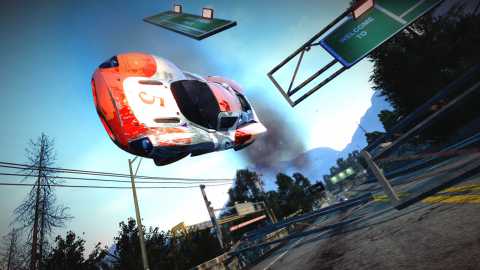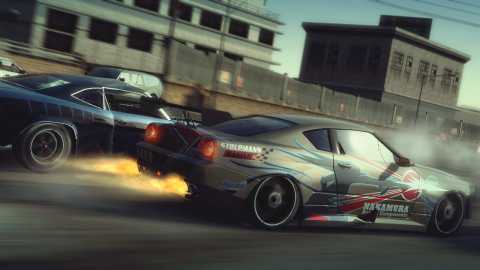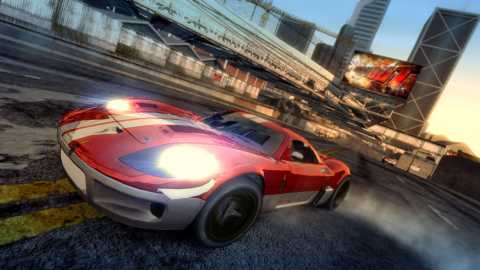Burnout Paradise is an amazing open-world racing game that stays true to the Burnout legacy, but you might not feel that way when you first pop in the disc. For the first several hours, the game comes off as overwhelming, with so many different things being thrown at you that you're not sure what to do first, or what even matters and what's just a bonus extra. Then there's the city. Paradise City, too, feels a little daunting at first blush. But as you play more of it, everything starts falling into place. Once you've got the hang of it and learned the best ways to get into and out of the downtown area, the ways to progress through the game become clear. And there's a lot of progression to be found between the 120 single-player events, the 350 online challenges (though due to repetition, there aren't 350 unique challenges), and the "Road Rules" that give you a time and score to beat on every single road in the game.

The online mode feels like a weird social experiment in video game form. That's because the game's online challenges aren't really like anything you've seen before, especially in a driving game. Many of them are basic, like "use boost for 10 seconds" or "catch air for a total of 20 seconds." But some of them have you using your head, trying to figure out which ramp and which approach will let you do a barrel roll through a hoop, or which car park's rooftop ramp will let you jump onto a specific building. This is where the game becomes cooperative, and where communication becomes absolutely key, since some players still don't even know what a challenge is, let alone how to whip a 360-degree flat spin off of a ramp.
Other challenges put all of the players (up to eight) in cramped quarters, like an expressway with thin ramps in the middle of it. You're all trying to jump off these tiny ramps, and everyone is colliding all over the place--at the base of the ramp, upon landing, and if you're lucky, in mid-air. The chaos these events add may make your task take a bit longer, but they're also at least half of the fun. Only the extremely impatient among us won't enjoy that aspect of the game.
All this communication and word-of-mouth information dispensing can get in the way, though. Joining random games rarely nets you a full group of focused, challenge-hungry individuals. And when any player quits the game mid-challenge, the task is failed. Having seven players do something tricky, only to realize that the eighth player is off on the other side of the city, totally oblivious to the action and unwilling to listen to the other players, gets old fast. You may never find enough people to finish all of the eight-player challenges, but with a focused group of friends, busting out the two-, three-, and four-player sets won't be too tricky.

The other Road Rule is the Showtime score. Showtime mode replaces the linear, puzzle-like Crash mode from previous Burnout games, and in keeping with the rest of the game's motif, it's more open-ended than its predecessor. Tapping LB and RB (or L1 and R1 on the PS3) slides your car out sideways and makes it start flipping. At this point, everything slows down and you have air control of your car. Your goal is to keep crashing your flaming husk into as many other cars as possible. The boost button lets you pop up off the ground and keep moving, and you'll need to keep hitting cars to keep the boost meter filled. Once you run out of boost and come to a standstill, the game tallies up your Showtime score for that road and play resumes. Leaderboards are also kept for this mode. While it doesn't require you to think hard and dissect each situation like the crash junctions of the past, it's still a wild, great-looking ride that's a great tension reliever.
If you've played the demo on PS3 or 360, you already know that the game looks great, but the full game gives you a lot more to look at, from more great-looking fictional cars to a variety of locations. All of it comes to you at a smooth frame rate that conveys the same sense of speed that you're used to seeing in a Burnout game. In direct comparison, the textures in the PS3 version appear to be a bit cleaner-looking, and the higher quality of the PlayStation Eye camera means that the photos you send to other players during online events are better on the PS3. The differences between the two feel minor.

There's more opacity here than there probably should be, but once you penetrate its dark shell and figure out what, exactly, is going on, Burnout Paradise is nothing short of amazing. The team at Criterion took a big chance and it's paid off very well. The game revamps the stock formula in major ways without losing most of the high-speed racing flavor that you hope to see from something with Burnout in the title.